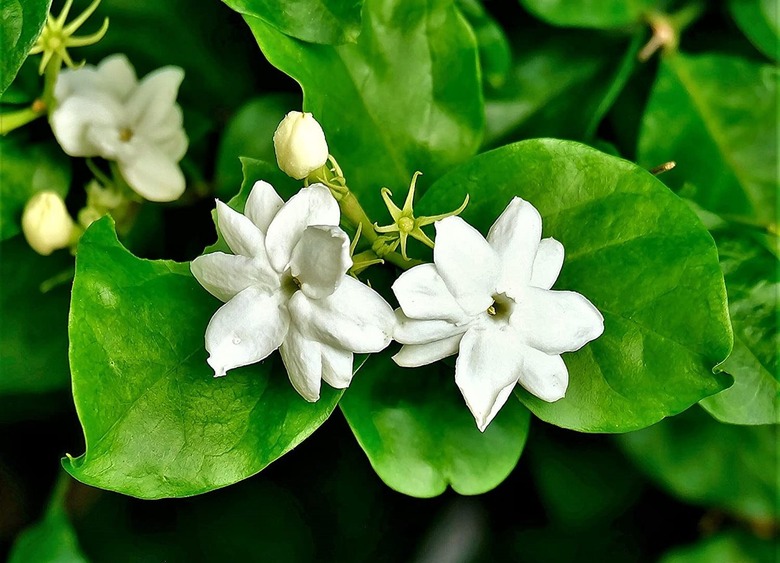How To Grow Sampaguita
We may receive a commission on purchases made from links.
Sampaguita is in the family of jasmine plants and is native to southern Asia, especially India. It is the national flower of both the Philippines and Indonesia. The plant is vinelike and has a climbing nature but is fairly thick and shrubby. It is similar to the Asian jasmine, but is actually an Arabian jasmine.
Jasmine perfumes the air with a sweet scent and produces pure white star-shaped flowers. Sampaguita has a 1-inch wide flower that blooms only for 24 hours. Jasmines are tropical to subtropical plants that are appropriate for USDA plant hardiness zones 9 to 11.
Plant the Sampaguita
Plant the Sampaguita
Plant the sampaguita plant (Jasminum sambac) in well-drained soil in either sun or partial shade. It can grow in the ground or in a container. Mix in 5 to 7 inches of compost to enhance the soil. Dig a hole that is twice as big as the root ball so the roots can spread easily. Remove the plant from its nursery pot and gently spread out the root ball into the hole. Backfill and press the soil in around the roots.
Water the new plant after transplanting until puddles form. The plant will need to be kept moist while it establishes, but after that, it can tolerate medium to low moisture levels. Dig a 4- to 6-inch trench alongside the plant and feel the deeper soil to assess if it is time to water. Cool soil is wet enough and needs no extra irrigation.
Care for the Sampaguita
Care for the Sampaguita
Grow the plant in a pot in areas where temperatures drop below freezing regularly so you can move it indoors; ice and snow are no good for the sampaguita. Make a mixture of half potting soil and half compost for a containerized jasmine.
Provide a trellis or string up a vertical surface. This plant can be trailing or climbing, but it will need help at the start to twine up an upright surface. Twist the stems around the support as it grows.
Prune the terminal ends of the plant to minimize the spread. Sampaguita can grow 5 feet in length. Cut off the ends to the next growth point to promote bushiness and the formation of more branches.
Feed your jasmine with an acid lover's liquid plant food or water soluble fertilizer. The pH range should be 5 to 6 for the Arabian jasmine. Feed the vine in spring and then again midway through the growing season. Follow the amount on the instructions and dilute it in your irrigation water.
